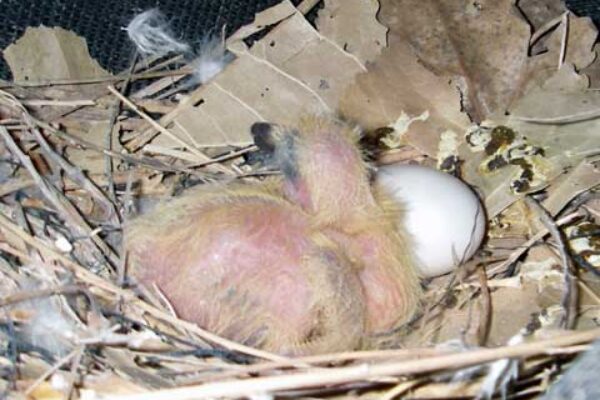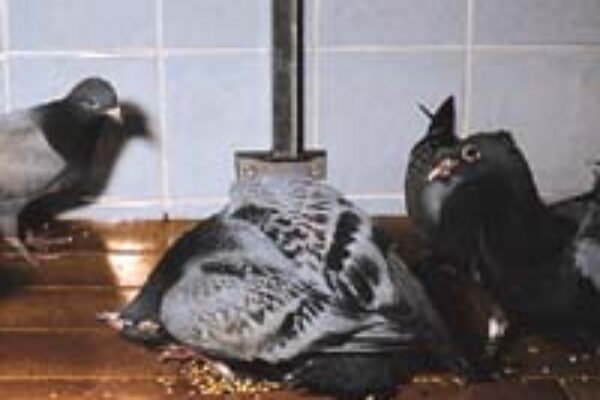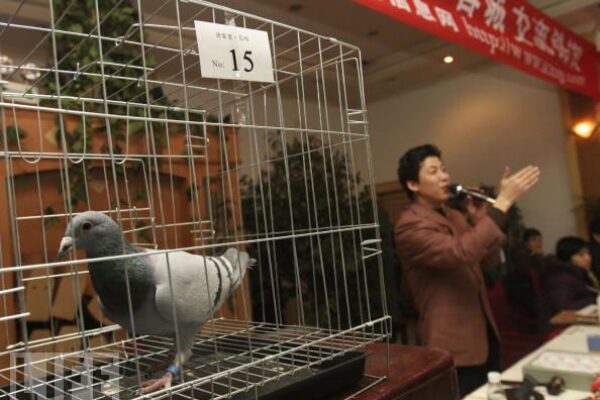April in the Loft Part 1– Health of the Young Racing Pigeon
 The health of the young racing pigeon is the first and foremost priority of the successful fancier. By this time of year, it is common to have the first round or two of the babies weaned and in the air. Racing success is dependent on the overall health and conditioning of the young bird team and, as always, prevention is the key to good health.
The health of the young racing pigeon is the first and foremost priority of the successful fancier. By this time of year, it is common to have the first round or two of the babies weaned and in the air. Racing success is dependent on the overall health and conditioning of the young bird team and, as always, prevention is the key to good health.
The successful fancier stays on the cutting edge of the latest in the care of the racing pigeon. It is important to utilize the available resources you have to get the information you need. The best resource for bird health is a veterinarian who also races pigeons. Look, too, to other successful fanciers to find out what they are doing to ensure the health of their loft.
In this article we will discuss the most common disease of pigeons, and outline some preventative health measures you can take to support your young birds through the stress of weaning and first flights.
Pigeon Canker
Pigeon canker is the most common disease of pigeons, infecting about 80% of the birds. Birds can be carriers of canker and have few symptoms but when the bird is stressed, canker will rapidly worsen and impair the birds. Pigeons that carry this disease can transmit it to their young during feeding. So, two weeks after weaning, which is a time of great stress, check your young birds for canker.
Symptoms of Canker
Symptoms of canker range from a slight mucous to a cheesy-looking substance in the throat, usually along the sides, or in the mouth. Because canker, in its early stages, looks like a slight throat mucous, the fancier may assume it is a respiratory illness and initiate the wrong treatment. Canker can also be internal if it has entered through the bird’s navel at the yolk sac attachment.
Be careful not to confuse canker with pigeon pox sores. The pigeon pox sore is hard and will bleed if broken from the skin. The canker will break off and crumble if touched with a Q-tip.
Treatment of Canker
To give the proper protection during a time of great stress, treat two weeks after weaning. There are a variety of effective canker treatments on the market today. However, it is generally accepted that canker has become more resistant to the available treatments so many fanciers are increasing the dosages.
Common treatments for canker include:
- Ridzol S
- Trichoron Forte from Pego
- Turbosole from the Australian Pigeon Company
- Ronidazole tablets (individual dosing)
Provide further support with Ideal pills. This is an excellent blend of minerals and vitamins that you should begin as soon as you take the young birds away from their parents.
Nutritional Support during the Stress of Weaning
Weaning early, at 24 to 26 weeks, is preferred but weaning at any time causes great stress on the bird which increases its susceptibility to disease. Always support times of stress nutritionally. Nutritional support is best provided with additional vitamins, amino acids and probiotics.
The Ideal pills provide great sustenance to help the babies get through the first ten to twelve hours as they get accustomed to their new loft.
Additionally, probiotics support the bird’s digestive tract and can stabilize the bird’s droppings practically overnight. Probiotics are also very important following any treatment with medication.
Recommended probiotics include:
- Digestal
- Pro-Digest
- Health Gard
- Pro-Vital All Bird Economy Plus
Stress of First Flights
Other times of stress for the young birds are the first flights. This includes environmental stressors such as hawks, power lines and other obstacles. Once again, nutritional support can help the bird maintain its health during the times of stress.
Supply additional vitamins and amino acids with products such as:
- TVG from Pego
- Pego Amin
- Recup-Lyt from Colombine
Also, minimize stress by providing a regular routine of feed and water.
Incorporating the nutritional recommendation and other health-promoting measures discussed in this article will help you, the successful fancier, in supporting your loft’s health. Take this time in April to work on health management in your loft.
Head on over “April in the Loft Part 2” where we will talk about the ‘old bird races’.









Very good
April’s always busy! even in the yard, kids sports, etc! No different with da boids!, Great time of year! hope this year will be a good one.
Wow I did not know how important it is to keep stress down on young birds thanks